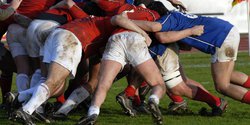
Elbow pain affects approximately 1-3% of the population annually, with conditions like arthritis and tennis elbow being among the most common culprits. For Pittsburgh residents experiencing persistent elbow discomfort, distinguishing between these two conditions is crucial for effective treatment and long-term relief.
Dr. Brian Kelly is an expert provider of elbow, knee, shoulder, and sports medicine treatments in PA, offering comprehensive care for patients struggling with various orthopedic conditions. Dr. Kelly specializes in accurate diagnosis and personalized treatment plans that address the root cause of your pain, not just the symptoms. Ready to find relief? Schedule an appointment with Dr. Kelly today to get the expert care you deserve.
Understanding the key differences between elbow arthritis and tennis elbow can help you make informed decisions about your health and treatment options.
Understanding Elbow Arthritis vs. Tennis Elbow
Many people experiencing elbow pain wonder whether they're dealing with arthritis or tennis elbow. While both conditions can cause significant discomfort, they have distinct characteristics that set them apart.
Elbow arthritis typically involves the breakdown of cartilage in the elbow joint, leading to bone-on-bone contact and inflammation. This condition often develops gradually and affects the entire joint structure. Tennis elbow, on the other hand, is a repetitive strain injury that primarily affects the tendons connecting the forearm muscles to the outside of the elbow.
The location of pain can provide important clues about your condition. Arthritis pain usually occurs deep within the joint and may be accompanied by stiffness, while tennis elbow pain typically manifests on the outside of the elbow and may radiate down the forearm.
Recognizing Elbow Arthritis Symptoms
Elbow arthritis symptoms can vary in severity and may worsen over time without proper treatment. Understanding these signs can help you seek timely medical attention.
- Primary Symptoms of Elbow Arthritis: Common symptoms include joint pain that worsens with activity or weather changes and morning stiffness that improves with movement. Swelling around the elbow is also common, especially after activity. Many patients experience a limited range of motion, making it hard to fully extend or bend the elbow, affecting tasks like reaching, lifting, or carrying.
- Advanced Arthritis Symptoms: As arthritis progresses, symptoms may worsen. The elbow may develop visible deformities, and grinding or clicking (crepitus) can occur during movement. Weakness in the affected arm is common, especially when gripping or performing tasks requiring elbow stability. Night pain may develop, impacting sleep and quality of life.
Tennis Elbow Characteristics
Tennis elbow, or lateral epicondylitis, has symptoms that differ from arthritis-related elbow pain.
Classic Tennis Elbow Symptoms
- Pain and tenderness on the outside of the elbow, over the lateral epicondyle.
- Pain often radiates down the forearm.
- Discomfort increases with activities like:
- Gripping objects.
- Shaking hands.
- Twisting motions.
Key Differences from Arthritis:
- Tennis elbow usually doesn’t cause morning stiffness.
- Joint swelling is rare.
- Pain is most noticeable during activities involving the affected tendons.
Tennis elbow can make daily tasks like opening jars, turning doorknobs, or lifting a coffee cup difficult or painful. It often affects the dominant arm, making work-related activities challenging.
Causes and Risk Factors
Elbow Arthritis Development Causes:
- Osteoarthritis from wear and tear, especially with repetitive stress from work or sports.
- Rheumatoid arthritis, an autoimmune condition that causes inflammation and cartilage destruction.
- Previous injuries (fractures or dislocations) increase the risk of post-traumatic arthritis.
Risk Factors:
- More common in individuals over 50.
- Athletes or workers performing repetitive elbow motions may develop it earlier.
Tennis Elbow Risk Factors:
- Not limited to tennis players, caused by repetitive gripping, twisting, or lifting motions.
- Common in occupations like carpentry, plumbing, painting, and computer work.
- Most often affects individuals aged 30 to 50.
- Poor technique in sports or work activities increases the likelihood.
- Sudden increases in activity without proper conditioning can contribute.
When to Consult an Orthopedic Doctor
Knowing when to seek professional help can prevent minor elbow issues from becoming chronic problems.
Warning Signs
Seek immediate medical attention if you have severe pain after an injury, a visible deformity, or can't move your elbow. Progressive weakness or numbness in your arm or hand also requires urgent care.
Persistent Symptoms
If elbow pain lasts more than a few days despite rest and home care, consult an orthopedic specialist. Early treatment often leads to better results and may avoid more invasive procedures.
When looking for an 'orthopedic doctor near me,' consider experience with elbow conditions, treatment options, and reviews. Dr. Kelly offers expert care for Pittsburgh residents with elbow issues.
Get Expert Care for Your Elbow Pain
Distinguishing between elbow arthritis and tennis elbow requires professional evaluation and expertise. Dr. Brian Kelly can provide an accurate diagnosis and personalized treatment plans to address your specific condition.
Don't let elbow pain limit your daily activities or quality of life. Schedule an appointment with Dr. Kelly's practice today to receive expert orthopedic care tailored to your elbow condition and get back to the activities you love.
